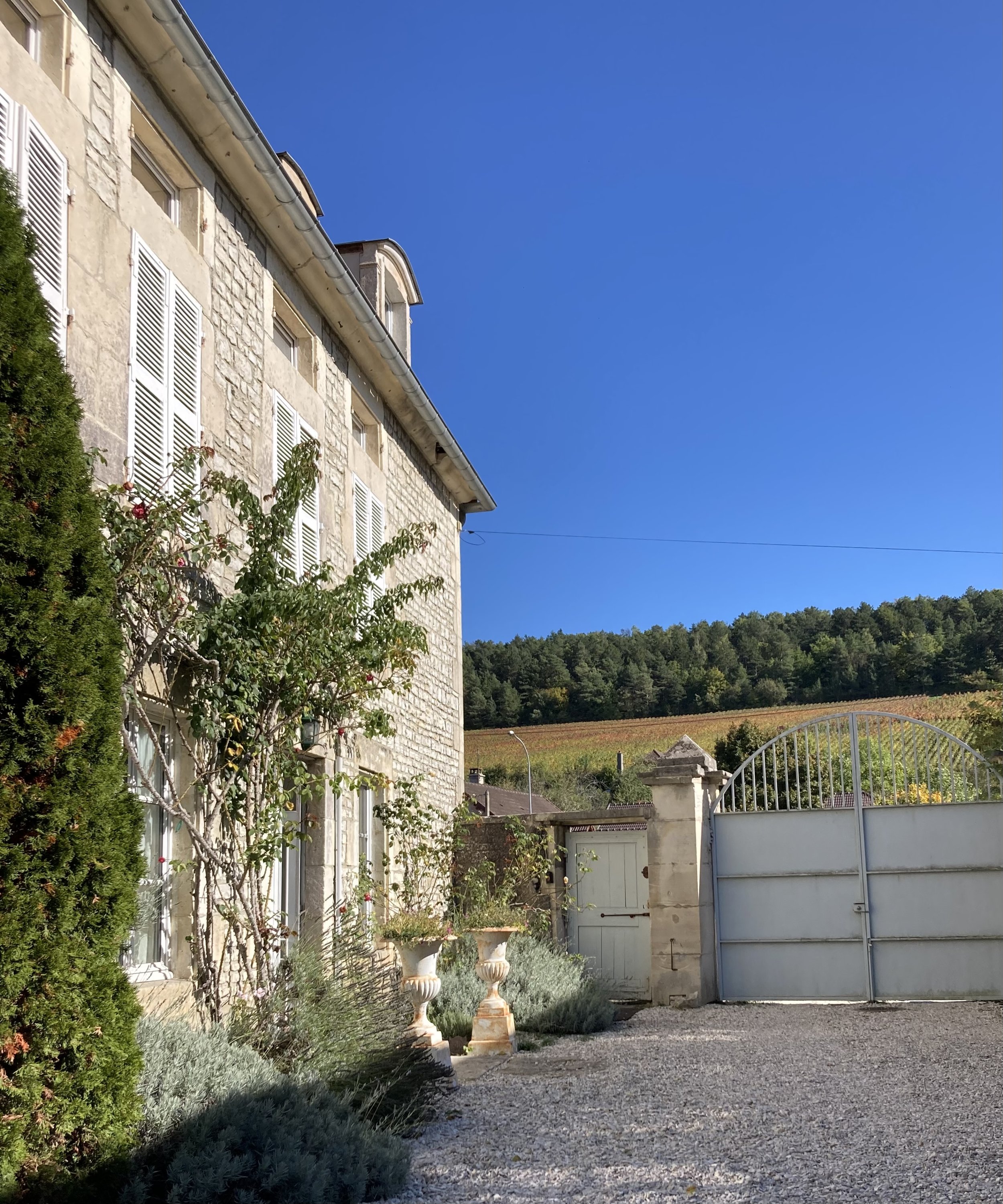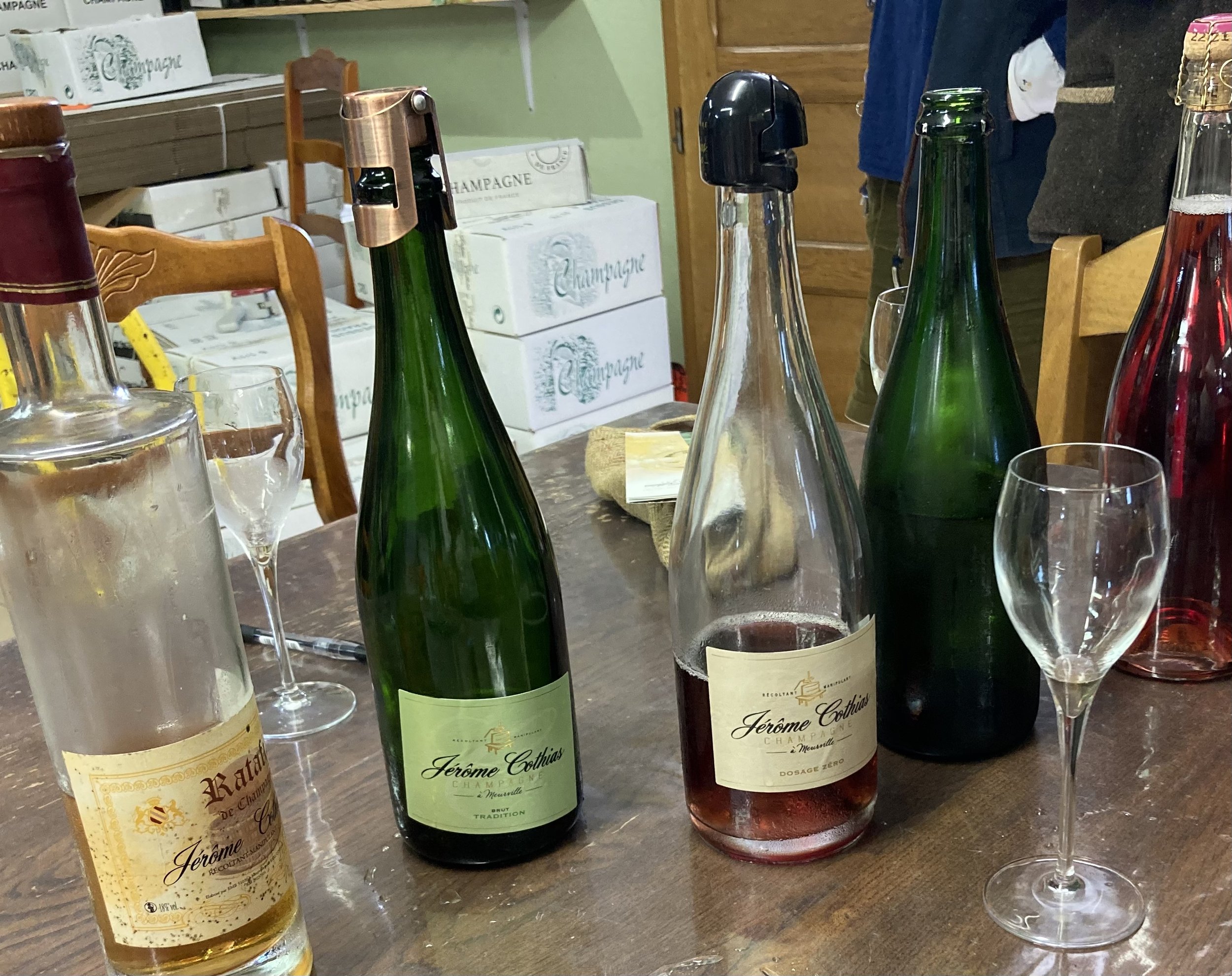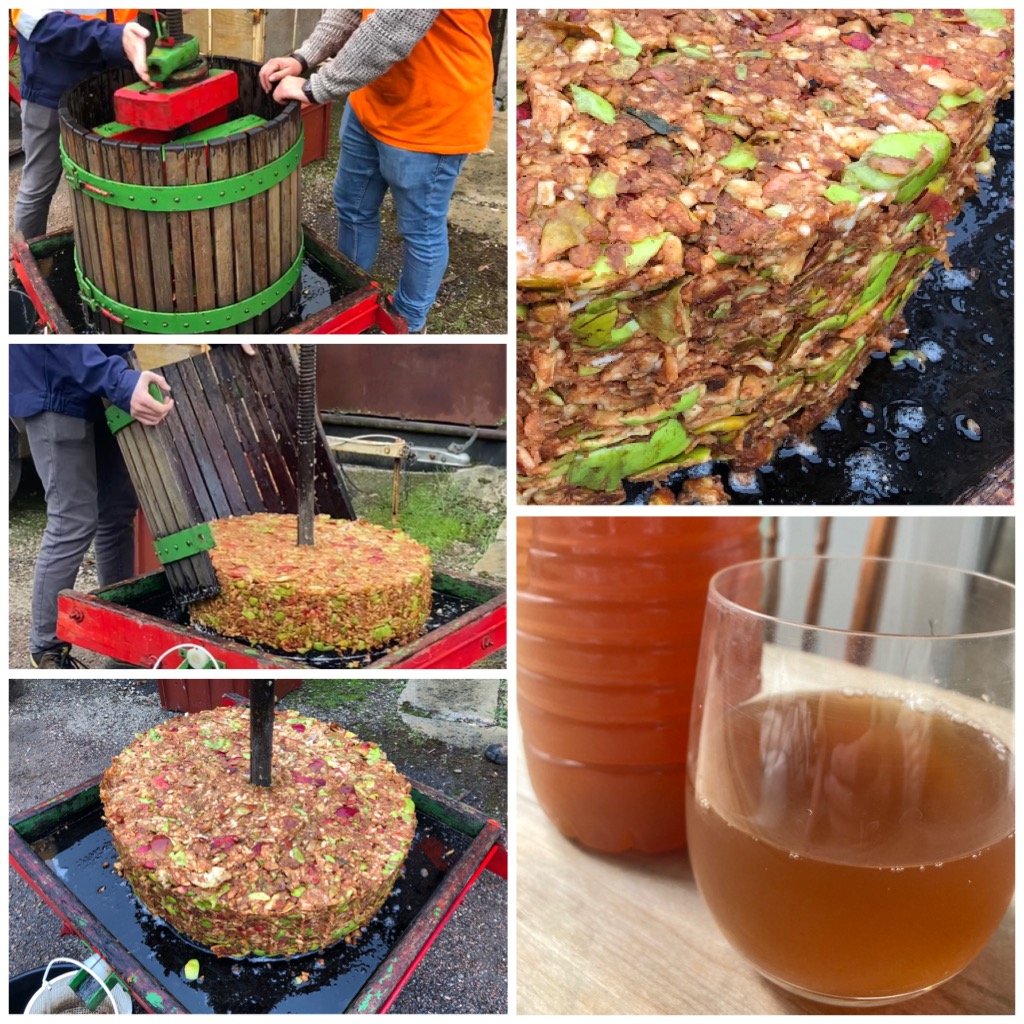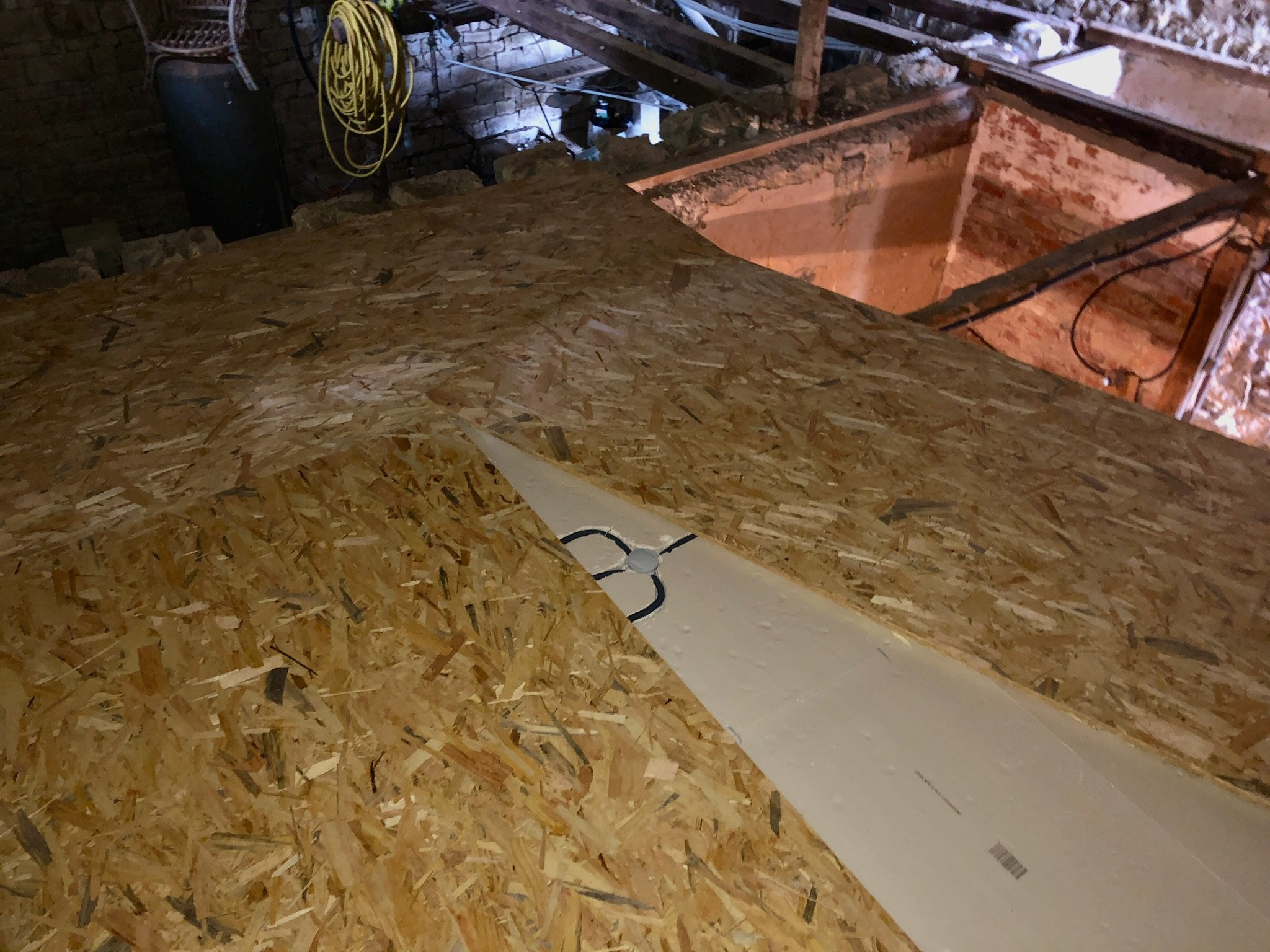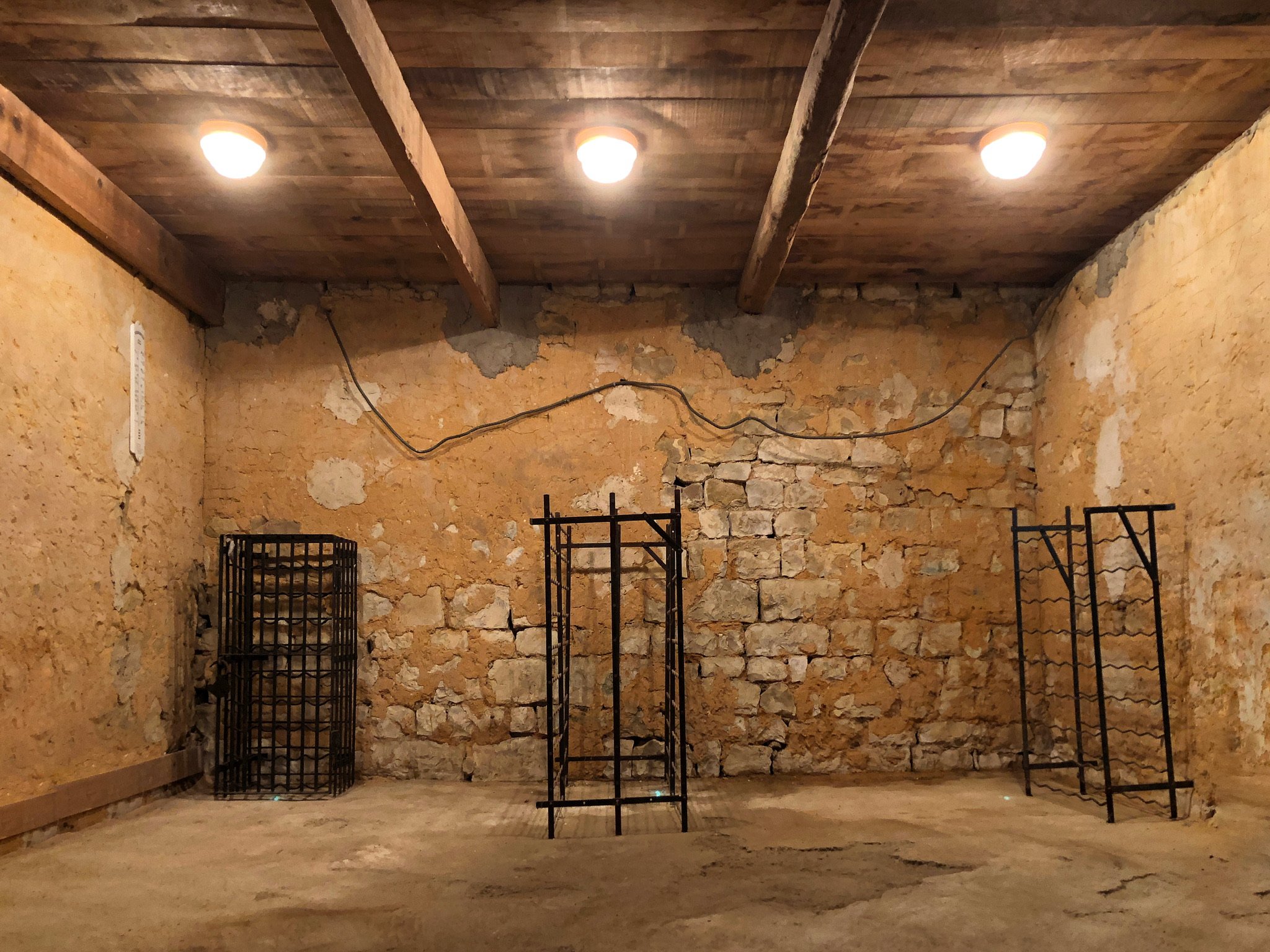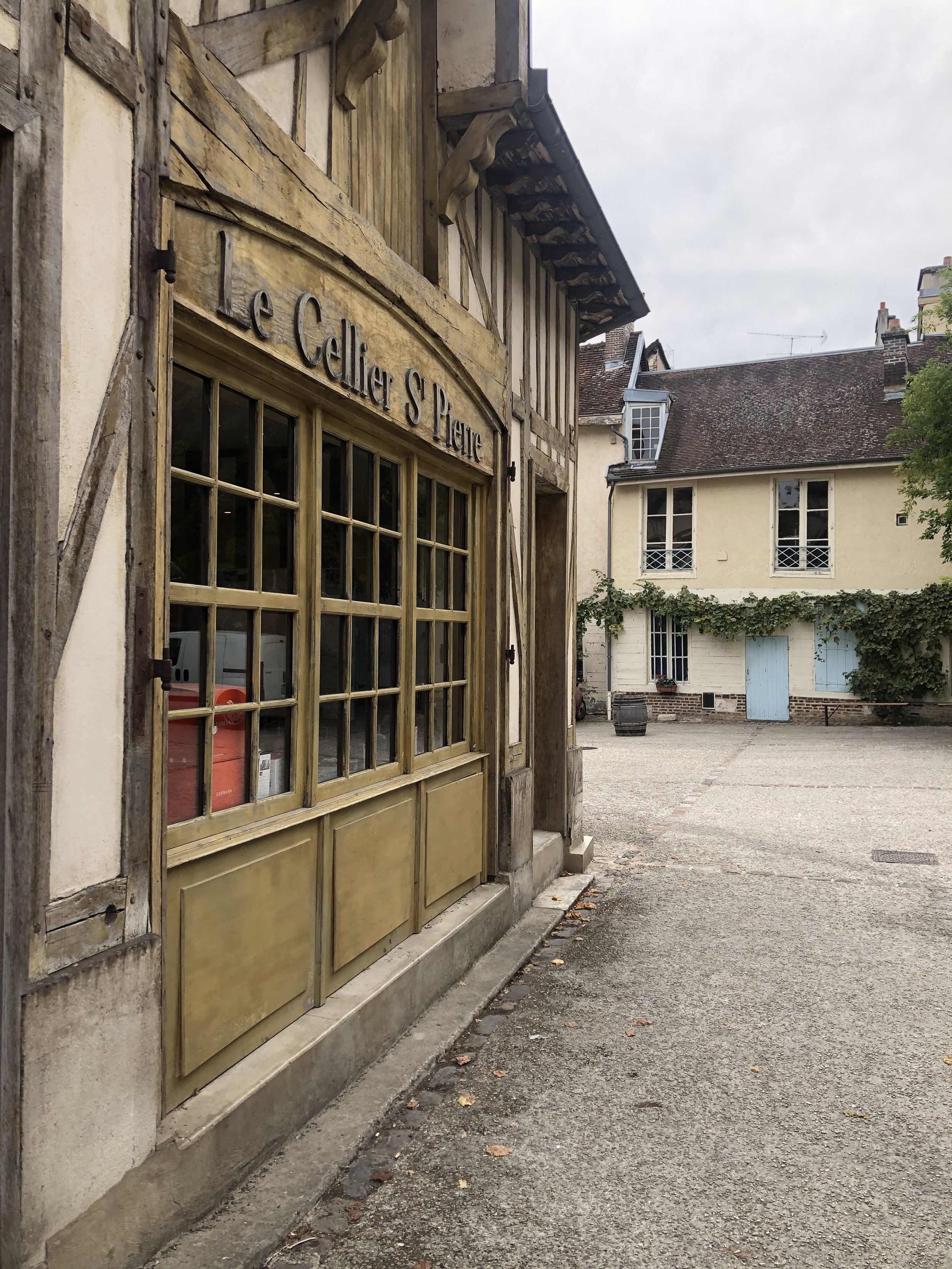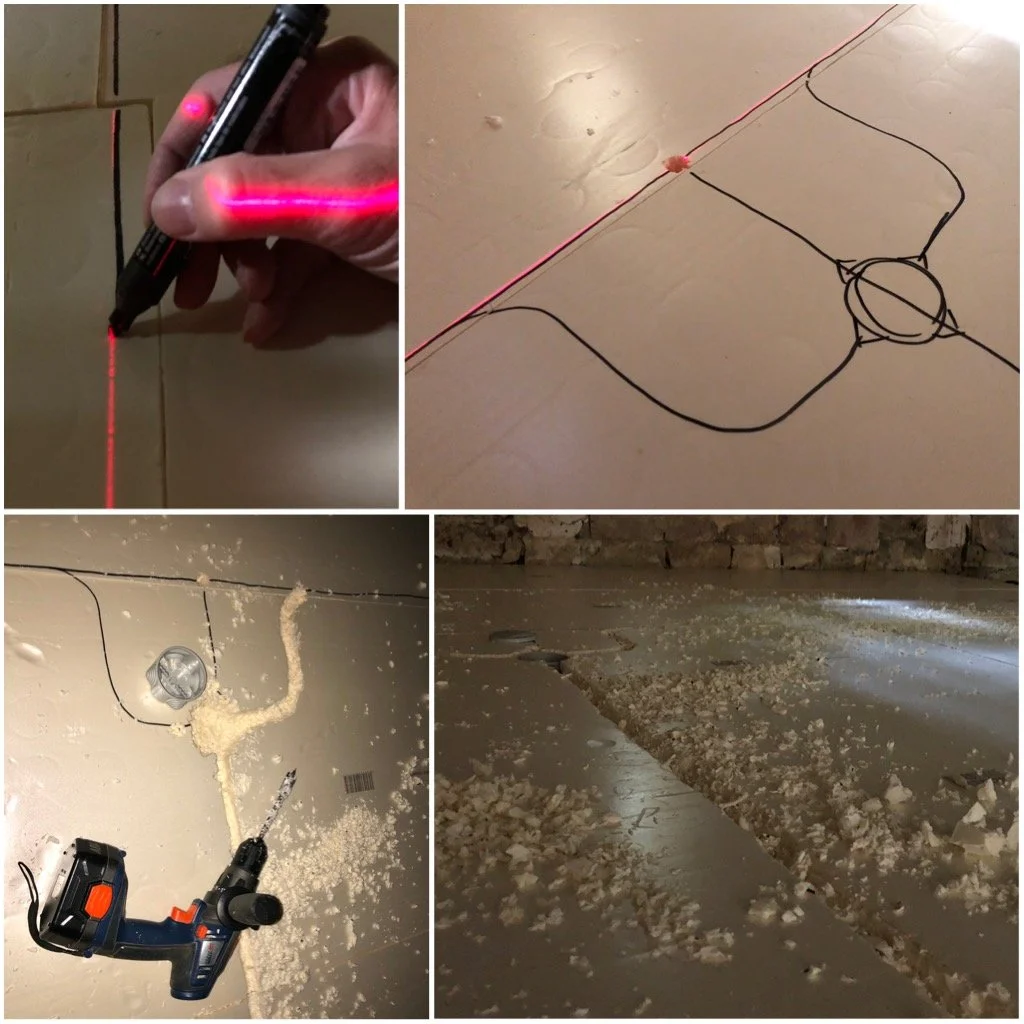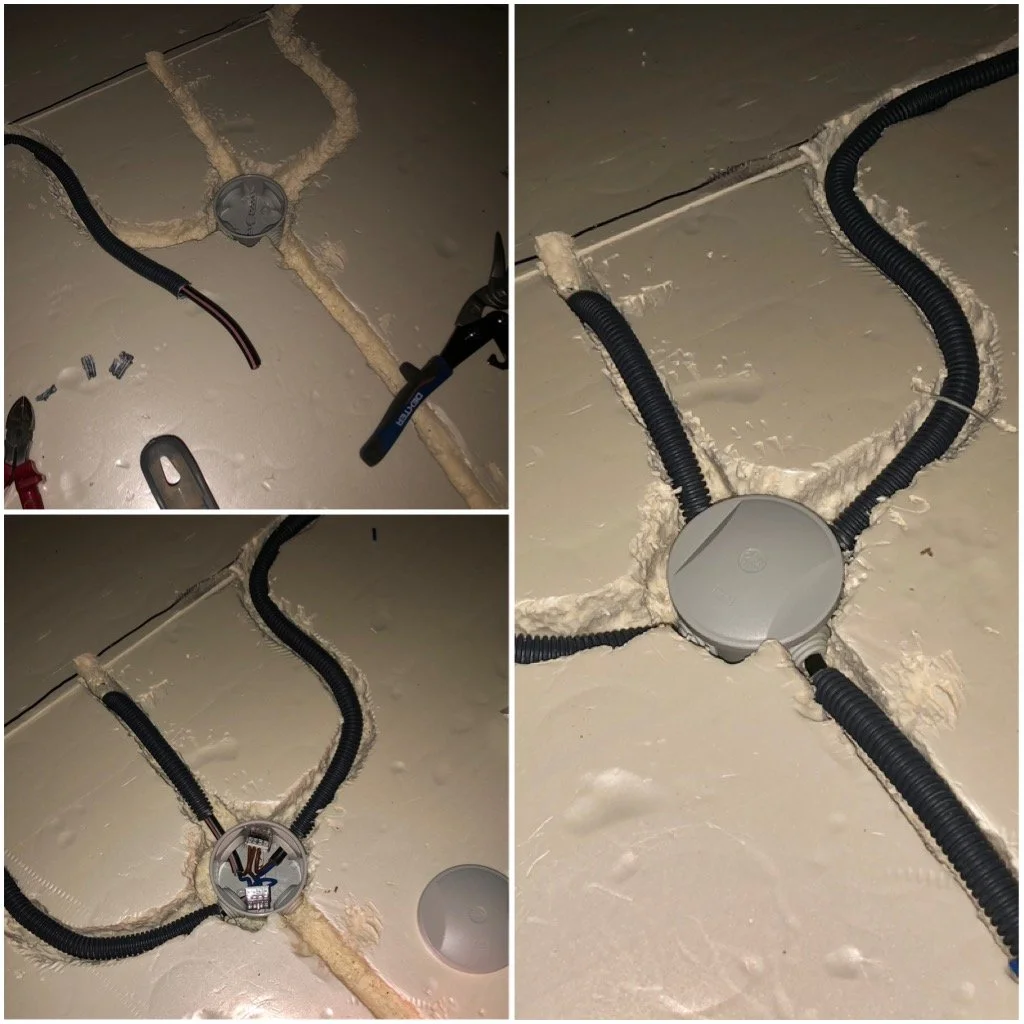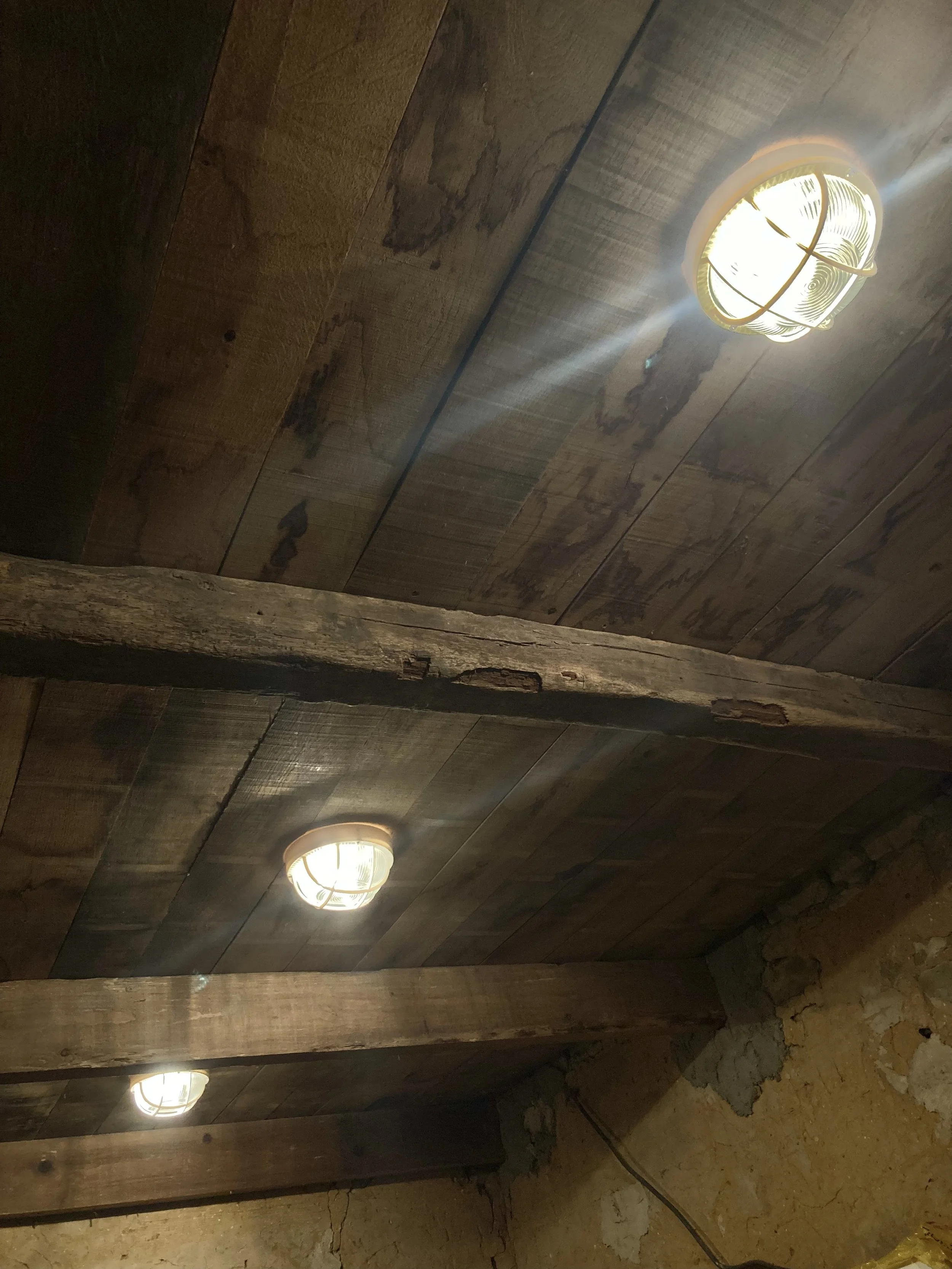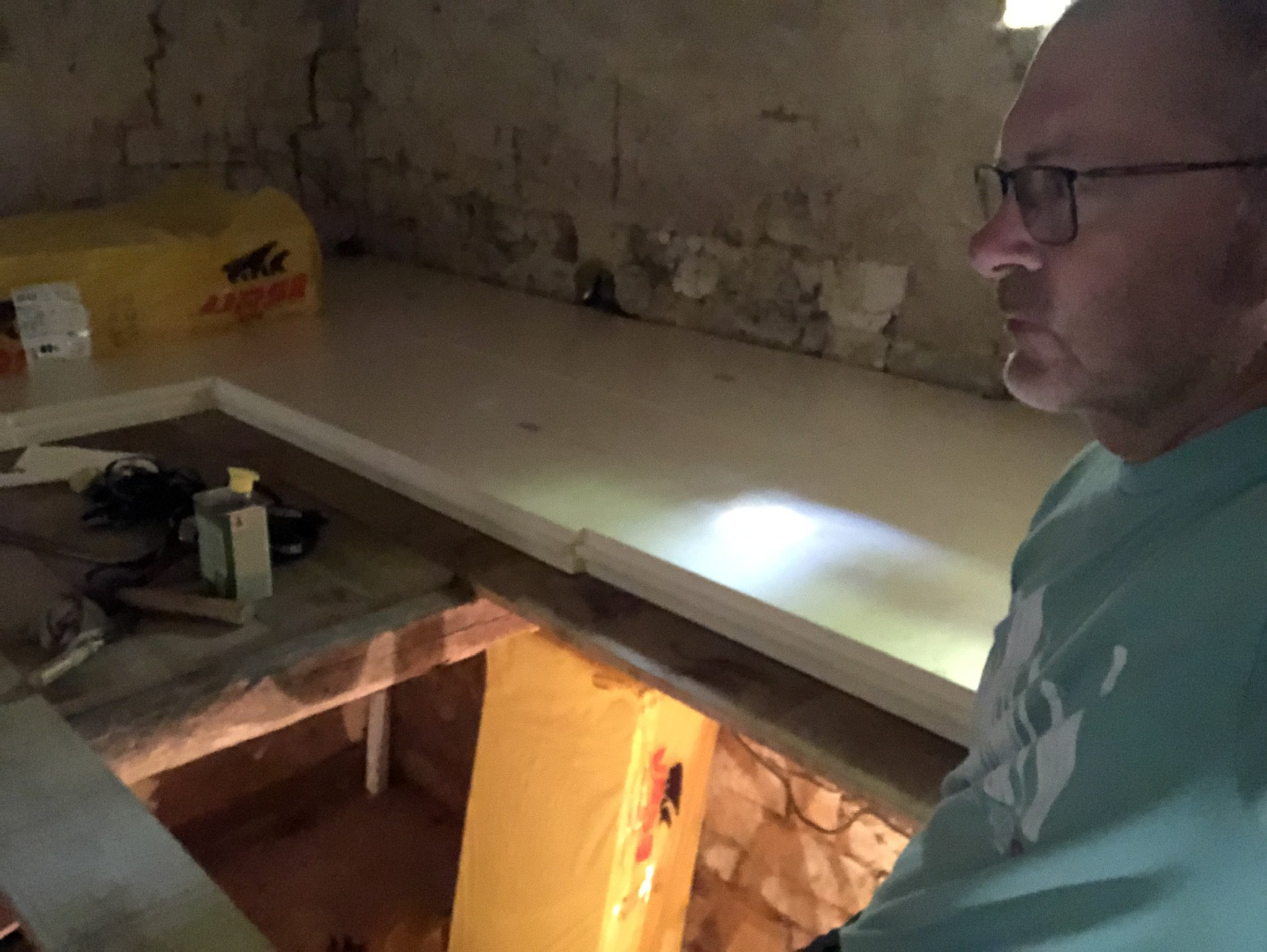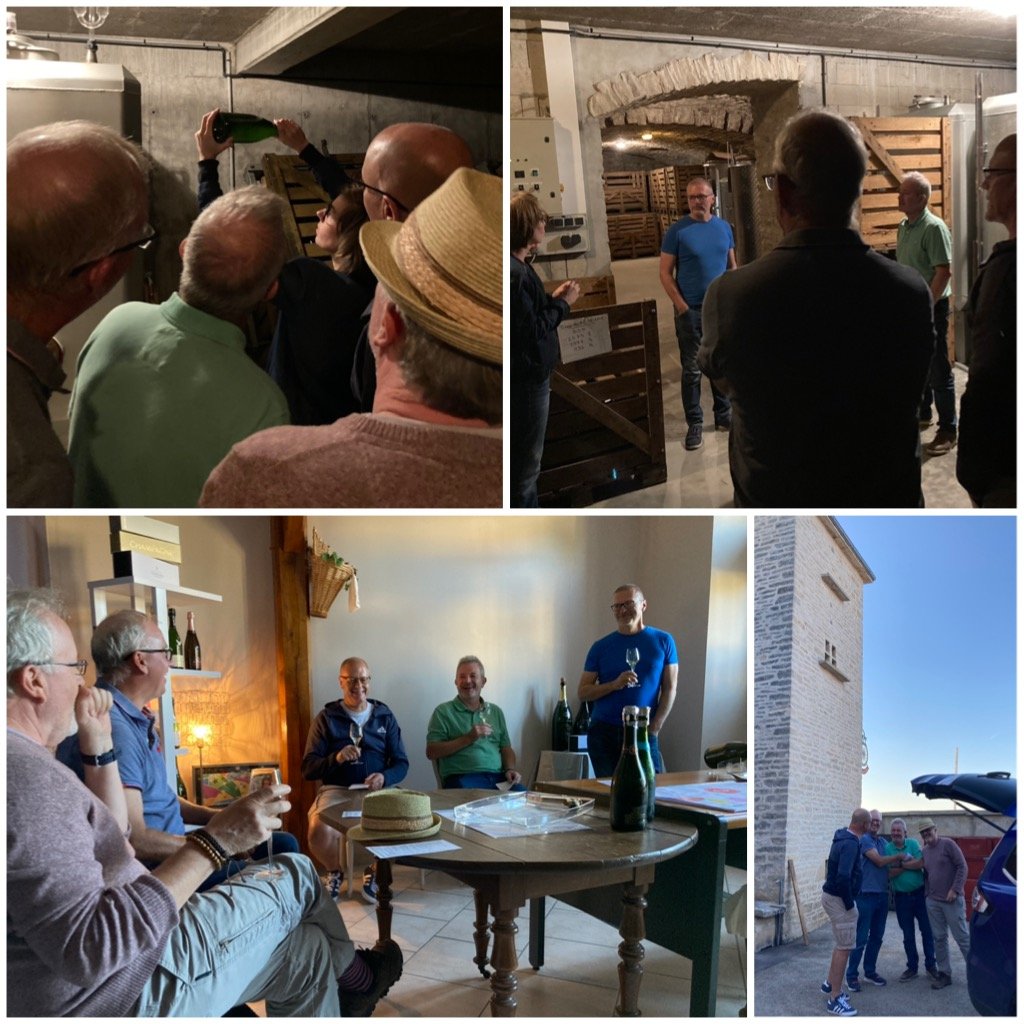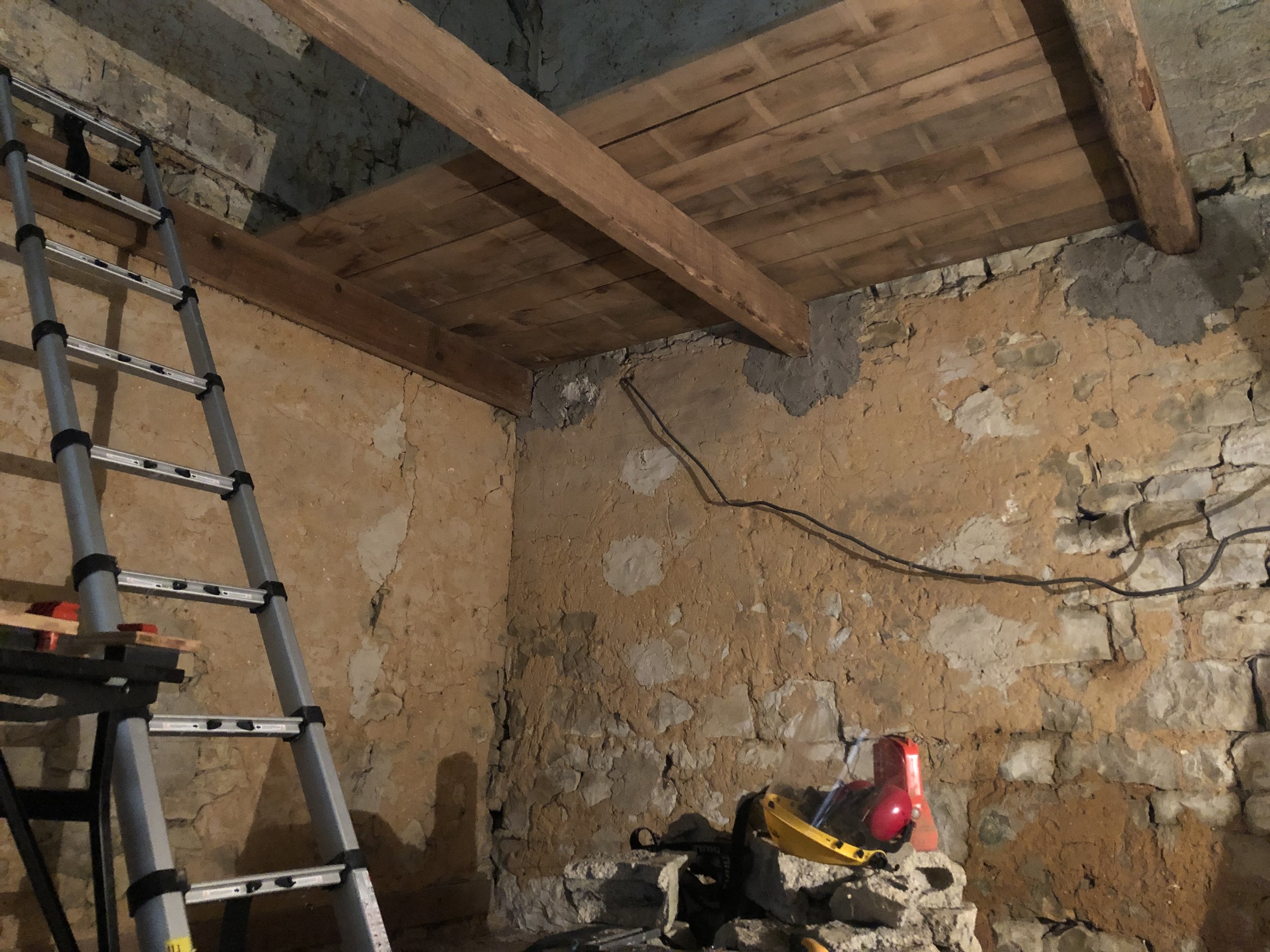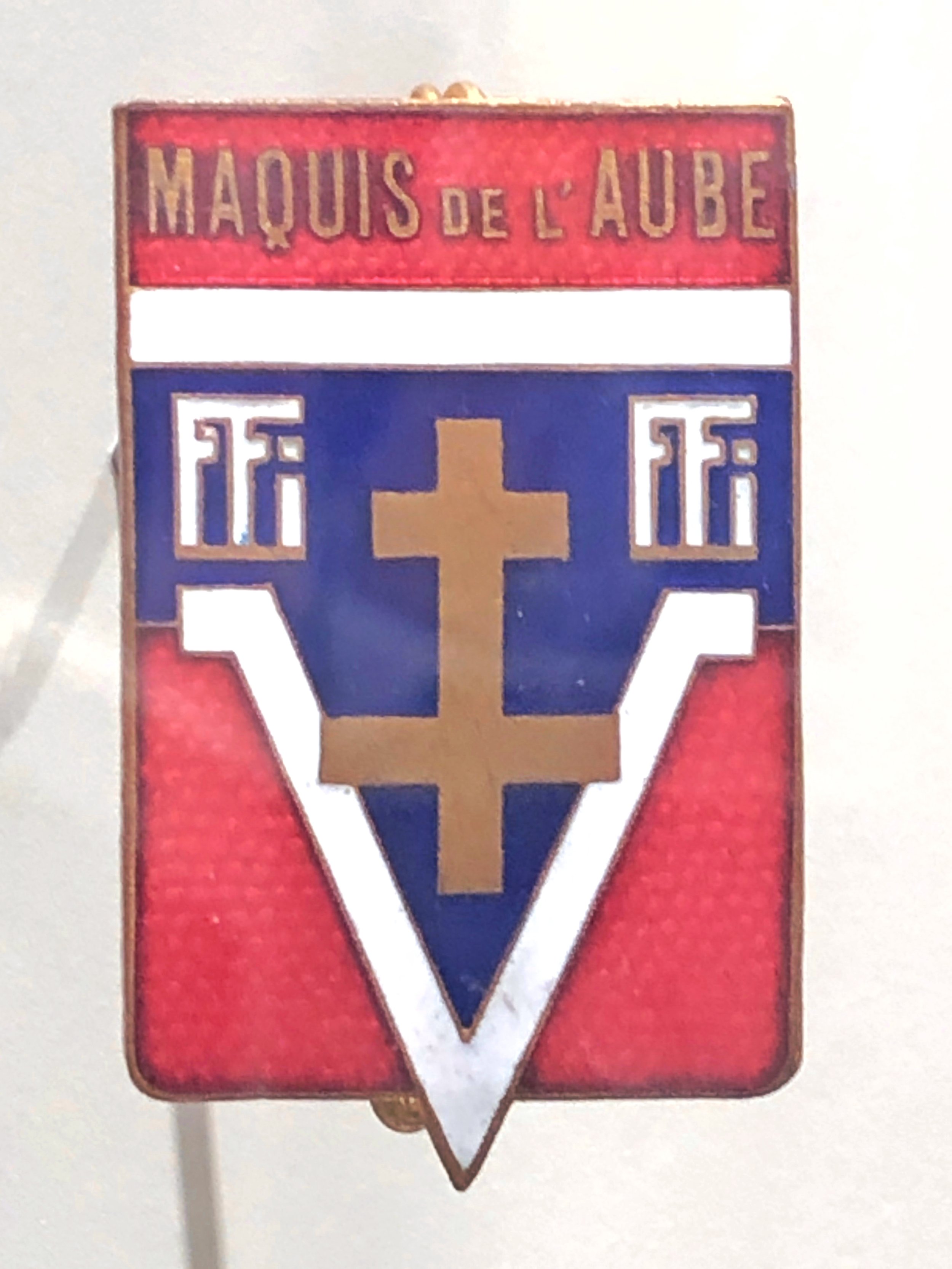My name is Jo, and in 2020 I moved to France with my husband, Brian. From our move to France, to running our B&B, my blog, which you can read below, is a diary of ‘Our French Adventure’. I share short stories about the Champagne region, and its people, and the life we have embraced here.
Last pickings
I’m off to the UK this week to visit Dad and Brian’s mum, Hilda. I wanted to get a few gardening jobs done before I left. It was such a beautiful day I could have spent hours out there, pottering away my afternoon. However, I want to make some green tomato chutney with the last of the pickings before I go, as the tomato plants are very straggly, and the tomatoes that are left on them are not ripening. Before that though the lavender needed the flower heads cutting back, as they have now seeded and dried. To stop the plants getting too leggy you have to trim them back to the last leaves on each branch. That job always takes way longer than I think it will, but it never really feels like a chore, as the lavender gives us beautiful colour and scent all summer through. I just love it.
Fresh
Before we moved to France one of the things I had been looking forward to doing was visiting local markets for seasonal produce, and sampling new foods. Since our arrival here fresh, local produce has become a part of our lives. Buying from individual producers, either at their farms or when they come to market, is central to how we eat. Even our closest supermarket, Intermarché, features local produce. But it’s how they take care of it that I love. Being near the vegetable counter always makes me smile, as whilst browsing the delicious, seasonal veg, every 30 seconds or so the displays are sprayed with a delicate mist of cooled water, which settles over the veggies. It keeps everything so fresh.
Over the coming weeks I will be sharing some more simple but tasty recipes that I have enjoyed cooking.
Autumn sun
It’s early October, and around 3 o’clock in the afternoon. Such a glorious day. Brian and I are enjoying a quiet cup of tea in between our jobs, and soaking up the autumn sun - it’s 23°c. I just love these days, With just a glint of those summer memories.
Family favourite
We had a great weekend with my brother Jon and his family. Not letting the very changeable weather spoil our fun, we wrapped up and got out to explore the countryside. I’d bought some Chaource and mushroom feuilletés (round, flaky pastry parcels filled with cooked mushrooms and a local soft cheese) to have as a little picnic with some coffee to warm us, whilst we enjoyed the amazing view across plateau de Blu. The vines are just starting to change colour with their autumn leaves - I love how the patchwork of colours develops across the vineyards.
Our weekend was full of chatter, laughter, catching up, and a family favourite sharing meals together and enjoying some sumptuous wines. A simply delightful few days.
Sunday morning tipple
My brother Jon and his family came to visit us this weekend. they hadn’t seen the house for six years, so they noticed a lot of changes. It was just great having them here and spending some quality time together.
I’d arranged for us all to visit a cave on Sunday morning in Meurville, about a twenty minute drive. Jérôme Cothias was a great host, explaining very slowly for us, so that we could translate for them the whole process of making Champagne. He gave us a very insightful tour around his cellar. One of the elements in his process that stands out is that he lays his champagne down for 3-4 years, before de-gorging it. It is then kept for a further six months before being made available for sale.
Jérôme was telling us of the fabulous year it had been for wine growers and Champagne producers. A lot of them will be producing a milliseme (vintage) this year, so something to definitely look out for.
Following the tour, we got to try his Champagnes, along with some ratafia, which I’ve kind of got quite a liking for. It’s a sweeter wine, around 20% alcohol, so ideal for dessert or, we are thinking, as a little tipple during the cold winter months.
Misty morning
The autumn mornings often bring cool, rolling mists, that clear a little one minute, and then descend like blankets the next. Driving through them to get our bread can be quite eerie, but also very beautiful.
Then, as quickly as they descended, they fade under the heat of the sun and give way to beautiful blue skies.
Apple festival
Autumn is well and truly here, and I am just loving all the autumn festivals. This weekend we visited the small village of Villemorian, not far from us, that had a wonderful autumn fete. The star of the show was ‘The apple’, and the village celebrates it every year. I don’t think I knew there was so many different varieties.
We just love how much effort goes into these events. Even though it was a bit of a damp day there were plenty of stalls selling local produce, lots of opportunities for snacks and lunch, and an apple press run by the community handing out bottles of apple juice, which you were invited to take for a small donation. It was so sweet, fresh and delicious.
We arrived around lunchtime, and were soon enjoying a barquette of merguez et frites, and after we tucked into some freshly fried apple fritters with a sprinkling of sugar.
And, of course, lunch included a free mini concert, a real French favourite. Just wonderful.
Up and under
Brian’s cellar has come along well. It’s not finished yet, as we still have the front wall to build, but the ceiling is now complete. Yesterday Brian managed to shuffle the boards over on top of the insulation. I was indoors preparing for some guests arriving. He had wanted to surprise me and try and do the job on his own.
It was wonderful when I went out to find him, and that stage was complete. The wall is next, but he’s still not completely sure how he’ll do that, and then we will lay gravel on the floor to finish it off, but it now looks more like a cellar.
This old hat
On our visit to Troyes last week, wandering around by the canals, we came across two statues one by Andras Lapis, a Hungarian sculptor, and the other by Sjer Jacobs, a Dutch sculptor. I just love it when sculptures are included as part of the landscape. Andras Lapis’s work (above) is somewhat quirky, with an elegant style. I just love ‘Lili’s’ wide brimmed hat, something I would definitely like to wear. Sjer Jacobs work, ‘The lady giving a kiss’, is also very quirky, and charming. I wonder how many lips have dared to meet hers?
We had actually gone in search of ‘Le cellier St Pierre’, a distillery where they make the liquor ‘Prunelles de Troyes’. Unfortunately the shop was not open, we had made the fatal mistake in France of arriving at a shop during lunch. We decided though it would be nice to revisit here at Christmas, so that’s the plan.
This area of Troyes is simply gorgeous. Old houses hanging over the cobblestone streets, gaining a little bit more space as they go up each level, and intricate alleyways and doorways, that hide away the stories of times past. I can only imagine the fun, the laughter, the sorrow, and the lives that these old buildings will have witnessed.
Light work
We were both excited this morning for Brian to get started on the electrics. He had cleaned up the work area and thought carefully about what needed to happen. I’m going to let Brian explain what he needed to do.
“We had already measured up and bought what we needed for the first stage of the lighting - lighting cable, extra shielding, junction boxes and connectors. I decided that it was best to hang all the lights off of a central junction box, so the first job was to draw the plan onto the polystyrene insulation layer and then drill out the channels with a wide drill bit. Once that was done, and the terrible mess cleared up, I could start running the cabling. I had to spend a lot of time making sure I had the correct lengths, both for distance and available wire for mounting the lights and wiring into the junction box. All went well though, and I was soon attaching the lights.”
“It was an incredibly pleasing moment when, after wiring it all into the existing light switch, I flipped the switch and there was light. Hoorah!”
Boarded up
I think having our friends here, helping Brian to get the large bits of OSB up ready to place on the insulation, has really given Brian the inspiration he needed to push ahead.
Today things have quickly progressed. He managed to lay some insulation, and pushed ahead to get the final few boards screwed into place before laying the rest of the insulation.
The boards for the ceiling are looking great and the insulation, fixed in place, makes it feel a lot more complete. Tomorrow he will be tackling the lighting.
Tom Frantzen
We enjoyed a delightful day out in Troyes on Friday. We took a stroll along the canal, just enjoying wandering around the old buildings and loving the sculptures we were discovering.
By one of the waters edges is an absolutely joyful sculpture, ‘La ribambelle joyeuse’. It is a group of children diving into the water by a large fountain, accompanied by a penguin in a bathing hat and a duck with a snorkel. What fabulous imagination.
Tom Frantzen, the sculptor for this little group of fantastic characters, combines his fantasy and Belgian humour to create lively, animated scenes. He studied in Brussels at the École Nationale Supérieure d'Architecture et des Arts visuels de La Cambre. Mostly based in Brussels, he describes himself as a contemporary Flemish fantasy artist, and in 2019 he was commissioned to produce a statue of Hergé - the creator of Tintin - to sit in front of the Hergé museum in Brussels. We will definitely go and see that one day.
Just along from this fun little group of swimmers he has created another wonderful cheeky scene, ‘Attendez-moi’ (wait for me), where an excited dog jumps through a hole in the railings of the bridge and chases some geese into flight. They are both such darling scenes and really quite beautiful to see. They add to the modern freshness that has been crafted around this area.
Many hands
Before our friends left us for the next part of their little adventure we asked them if they would help us with a tricky job that needed doing, that I’m not sure Brian and I would have been able to do on our own. Brian wants to put some OSB (chip board) over the top of the insulation in the cellar ceiling, to sandwich it all together. The only challenge for us is that the boards are really heavy, and I’m just not sure the two of us would have been able to get them up into the space, so we employed the help of 4 strong blokes, and many hands really did make light work.
For now, the boards are stored on a side of the roof that Brian isn’t currently working on. When he’s ready he will slide them over and into place. A job well done.
We have some time this week to hopefully make some good progress in here. Ideally we need to get this finished before the really cold weather arrives.
Champagne tasting
The pretty village of Celles-sur-Ource is just a ten minute drive from our chambre d’hôte. Marie, our host for the tasting, or dégustation, was ready to welcome us. First of all she gave us a tour of their cellar, and a short overview of how Champagne is made. We have experienced many cellar tours, but always love hearing their talks, as we learn something new every time.
After the cellar tour, we were invited into her office, which doubles up as her tasting room. I think we tasted 5 different cuvées in total, and had a lot of fun deciding which bottles to buy. It is such a great experience having the opportunity to try different blends of grape varieties, and you soon start to understand which varieties and which blends you prefer. Our friends bought a few bottles of each style, whilst we bought some Demi-sec rosé, called ´Coquetterié’. It’s an old favourite, and makes for a delicious aperitif.
Friends
One of the things I really struggled with when moving to France was not being able to just have those simple conversations with friends, the ones where you don’t really talk about too much in particular, but just chat and catch up on things.
Over the last few months though, things have changed. People are traveling once again, and friends are visiting us. It has been so good having the chance to just natter and while away some time with familiar voices. Yesterday a group of old friends arrived on a stop off heading south. It was a warm autumn day, around 20°C, so we enjoyed a very pleasant lunch in the garden, catching up on everyones lives - family, work, hobbies (golf seemed to feature heavily), holidays and mutual friends - such fun to be reminded of some marvellous memories.
After lunch we headed up to the point de vue to stretch our legs and soak up some autumn sunshine.
We had a champagne tasting booked for 5pm at Andre Fay’s et Fils in Celles sur Ource, so we were not out for too long. We wandered together around the top of the vineyards, following the line of trees, and then headed back to the house to set off on our tasting.
Pain au chocolat
Those that know me know I love a pastry with a coffee in the morning. My favourites being either a pain aux raisin or chausson pomme. However, lately I have indulged in a pain au chocolat. I have to say that I’ve always found the idea of anything with chocolate in the morning quite excessive, but the pain au chocolat from our local boulangeries are making me think again, as they are ever so light, with just enough chocolate.
The pain au chocolat is really a derivative of the croissant. These types of pastries were introduced to France in the early 19th century by a couple of Austrian aristocrats, who opened a bakery in Paris selling viennoisserie. This style of baking is now popular all over France.
Jam packed
Yesterday after our guests departed I decided I would take the plums we picked and make them into some jam. Our guests this year have loved my homemade jam with their breakfasts, so I don’t want to disappoint.
I’ve found some specific jam sugar, which literally takes 5 minutes to boil. You need 1.2 Kg of fruit (deseeded and prepared) to 1 Kg of sugar. I had about 2.5 Kg of plums, but I decided I would just use 1.8Kg, and freeze the remainder. We’ve been loving a plum crumble lately, so it would be nice to keep some for a few over winter.
All I needed to do for the jam was remove the stones, mix the chopped fruit with the sugar, and boil it all up. You need to keep stirring for a rolling boil of 5 minutes. I did do the cold plate test just in case, but I could see that it was setting nicely.
I was able to fill 8 jars, which did surprise me. I also have a bit in a pot ready for some friends to try, who are visiting on Wednesday. To ensure the fruit is packed through the jam, I’ve learnt that you need to let it cool slightly before putting into the jars, so that it doesn’t just float to the top.
It is such a gorgeous deep luscious red, I can’t wait to try it.
Insulation
Even though Brian is making some slow progress in the cave, which (just in case you missed it) is french for cellar. It is looking really good - very authentic - and he has put up about 1/3 of the boards for the ceiling so far.
Whilst we were in Bar-sur-Seine, earlier in the week, he picked up some insulation he needs to lay above the boards when they are all fitted. I think he needs more, but it will get him started, and we couldn’t fit anymore in the car anyway. The insulation is to help maintain the cool temperature we will require to store our wine properly.
One pot
The evening was a little cooler last night, so out came a cardigan. The season is definitely changing. Our guests however were keen to enjoy their champagne and canapés in the garden, and it was still just warm enough to sit outside.
Brian was serving a Brut by Charles Jolly, and I’d made some cheese gougères which I served with some sliced, locally made sheeps sausage, that I’d bought at the Friday market. It was all rather pleasant.
We moved indoors to the salle à manger for dinner. Brian had cooked us a juicy ‘faux filet’ (sirloin), and I’d made a tomato salad with tomatoes from the garden, and some boulangère potatoes. Obviously we couldn’t serve steak without Dijon mustard on the side.
Unfortunately though there is currently a little problem with Dijon mustard in France, as it is in short supply. Shelves in the shops have become completely empty of it since Canada experienced a severe drought, and war descended on Ukraine. Some 80% of french mustard seeds are grown in Canada, but the drought conditions there have halved the production levels. Seed from the Ukraine would normally fill the gap, but obviously not this year. This leaves just the French mustard seed producers, but they have just not been able to produce enough. When the shops do have supplies it is rationed to one pot per customer, so there’s enough (almost) to go around. It is used most days in french culinary life, so one pot does not last that long. In fact, it is estimated that the average French person consumes around one kilogram of mustard per year. How long does your pot of mustard last?
There is hopefully some good news, as brown mustard seeds from Burgundy should be ready by the end of September and, fingers crossed, Canadian imported seed will begin again in December also. All being well, Dijon mustard will be back on our French shelves as normal next year.
Pierre Pierron
I’ve been excited for about three years now that they were renovating the old Resistance museum in Mussy-sur-Seine. We visited the old building in 2018, with my mum and dad, and were given an amazing tour by a friend of ours, Valérie, and one of the older inhabitants of Mussy, whose family had lived through the period.
I am always captivated by the strength of character that some people demonstrate in the face of adversity, and there are many such stories of heroic actions that took place in this area – in the forests and towns that surround Mussy.
One of those stories is described in the museum, and concerns a man by the name of Pierre Pierron.
Pierre was born in 1903. He moved to Mussy-sur-Seine in 1930, where he found work in a packaging plant under the administration of a local man, Gérard Bernet. In the summer of 1943, whilst parts of France were under Nazi occupation, Gérard Bernet became head of the Air Operations Bureau (B.O.A.) of the Barséquanais (the local region). He was made responsible for the parachute landing sites around Mussy-sur-Seine.
He formed a team of twenty men, of which Pierre Pierron was one. Pierre took part in active undercover operations, and often participated in the recovery of containers parachuted in by France’s allies, an extremely dangerous task as the Nazi’s were watchful of any nighttime activity around the areas they believed this was happening. The air drops were communicated by coded messages, through a nightly freedom broadcast by radio from England called ‘London calling’.
Pierre and his team would be given the decoded location and the approximate time of the drop. Mobilising the units involved required good communications, and this was made possible by the theft of Nazi field telephones and kilometres of cable, that they planted at strategic sites throughout the area.
Their mission was to locate the large metal containers, often loaded with guns and ammunition, remove the contents, and then subsequently hide them for future actions.
Pierre was also involved in the Aube Secret Army, another active unit in the area led by Émile Alagiraude. He engaged in many operations for them both. Unfortunately, his heroic work for the resistance was brought to an abrupt end on 8th November 1943, when he was arrested by the Gestapo.
He was not captured during one of his missions, but instead was arrested on information supplied by local informants collaborating with the Nazis, this was yet another risk that the resistance operatives faced. He was first interrogated, then interned in the rue Hennequin prison in Troyes. He was later deported by convoy on 22nd January 1944, to the Buchenwald concentration camp in Germany.
Pierre was registered as number 43 395 and assigned to a Kommando in charge of wood cutting, to supply maintainence materials for the gasifiers. He suffered hard labour, and was deprived of all care and hygiene. He was soon moved to the medical block, suffering with a severe skin infection. Here he stayed, until on 29th April 1945 he was repatriated to France when the camp was liberated by the American army.
Following his terrible treatment at the hands of the Nazis, and what he had seen in the concentration camp, Pierre realised he needed to help others that had suffered the same, or worse, than he had. He became involved in the National Union of Associations of Interned Deportees and Families of the Disappeared (U.N.A.D.I.F.). After years of selfless service in this cause he was recognised by the State for his actions, and received the medal of the Resistance, along with others who he fought alongside. He was also awarded the Legion of Honour, the highest French order of merit.







